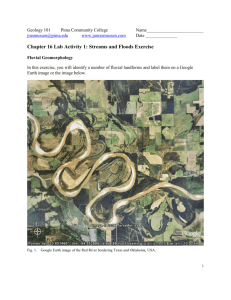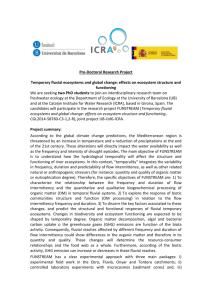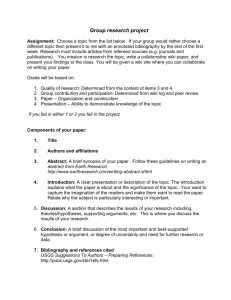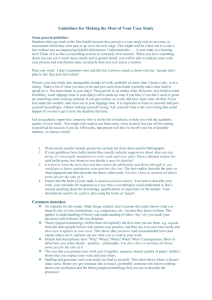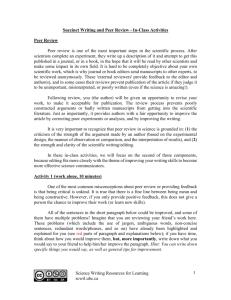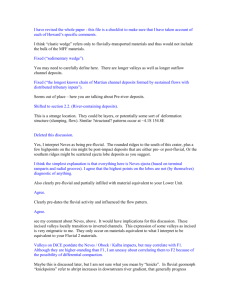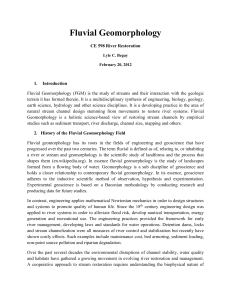NAME THE IMPACT OF PLANT EVOLUTION ON DEPOSITIONAL
advertisement
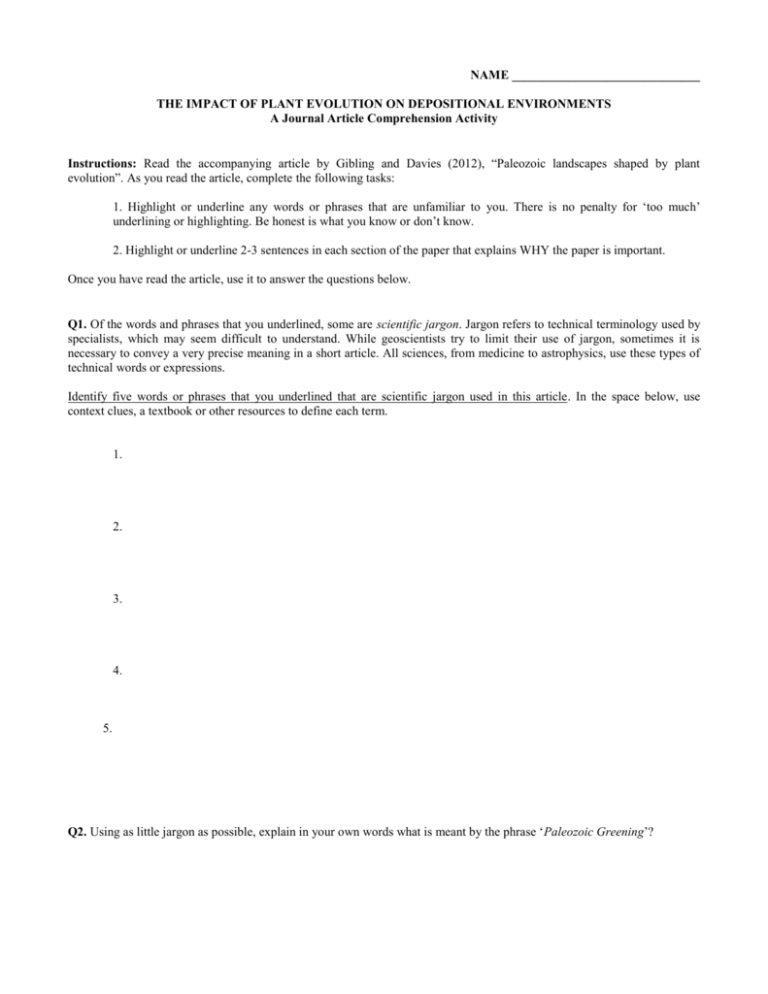
NAME ______________________________ THE IMPACT OF PLANT EVOLUTION ON DEPOSITIONAL ENVIRONMENTS A Journal Article Comprehension Activity Instructions: Read the accompanying article by Gibling and Davies (2012), “Paleozoic landscapes shaped by plant evolution”. As you read the article, complete the following tasks: 1. Highlight or underline any words or phrases that are unfamiliar to you. There is no penalty for ‘too much’ underlining or highlighting. Be honest is what you know or don’t know. 2. Highlight or underline 2-3 sentences in each section of the paper that explains WHY the paper is important. Once you have read the article, use it to answer the questions below. Q1. Of the words and phrases that you underlined, some are scientific jargon. Jargon refers to technical terminology used by specialists, which may seem difficult to understand. While geoscientists try to limit their use of jargon, sometimes it is necessary to convey a very precise meaning in a short article. All sciences, from medicine to astrophysics, use these types of technical words or expressions. Identify five words or phrases that you underlined that are scientific jargon used in this article. In the space below, use context clues, a textbook or other resources to define each term. 1. 2. 3. 4. 5. Q2. Using as little jargon as possible, explain in your own words what is meant by the phrase ‘Paleozoic Greening’? Q3. Using as little jargon as possible, describe in your own words the steps that make up the ‘Devonian Plant Hypothesis’. [Hint: A flow-chart might be helpful!] Q4. In the space below, draw cross sections for a sheet-braided fluvial system and a channeled-braided fluvial system. When does each style appear in the rock record? What might the deposits of each system look like? Cross Section: Sheet-Braided System Geologic Age Range: ______________________ Cross Section: Channeled-Braided System Geologic Age Range: ________________________ Critical Thinking Q5. The authors describe in detail changes in fluvial style that formed as a result of plant evolution during the Paleozoic. On the following page, use the data that the authors present to construct three vertical profiles that illustrate differences in fluvial/terrestrial deposition during: (a) the Cambrian; (b) the Mississippian (meandering); and (c) the Pennsylvanian (fixed). A schematic example is provided below. Be detailed and label thicknesses, lithologies, sedimentary structures, trace fossils and other fossil content. Be sure to show features that are unique to each of the three sections as described in the article. Example: Vertical Profile of a Sandy Braided River System (from Boggs textbook, 2011) KEY TO SYMBOLS Vertical stratigraphic profile of a fluvial/terrestrial system during the Cambrian. Vertical stratigraphic profile of a meandering fluvial/terrestrial system during the Mississippian. Vertical stratigraphic profile of a fixed channel fluvial/terrestrial system during the Pennsylvanian. Critical Thinking Q6. In your own words and using as little jargon as possible, reflect on the previous questions and the journal article. In the space below, write a short essay that addresses the following points: o Prior to reading this article, how did you envision ancient river (fluvial) systems? o How did reading this journal article change your concepts of river systems through time? o Were there additional questions that you had that weren’t addressed in the article? o Finally, what was the purpose of this article? Why do you suppose the authors wrote it? What did it contribute to the scientific community? Please be sure to hand in all pages in this exercise as well as your highlighted/underlined article.

